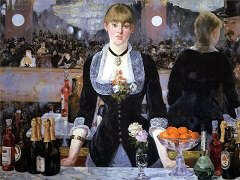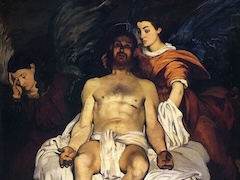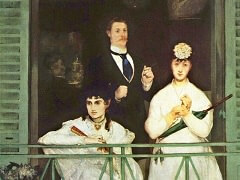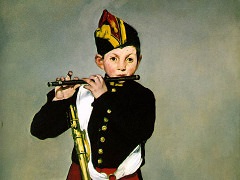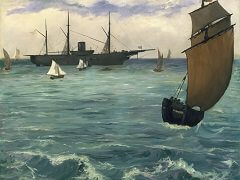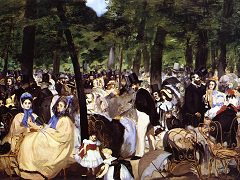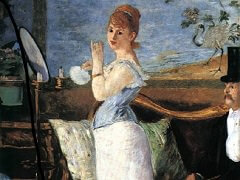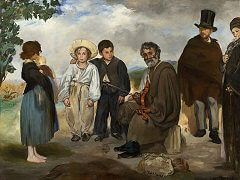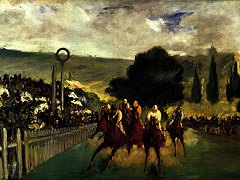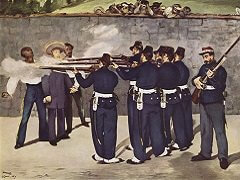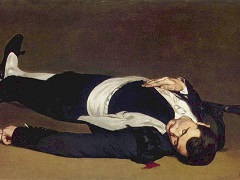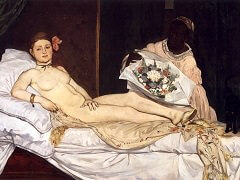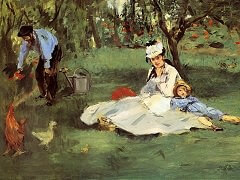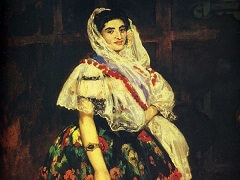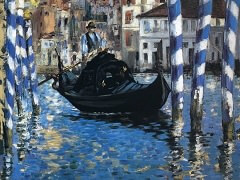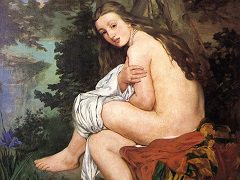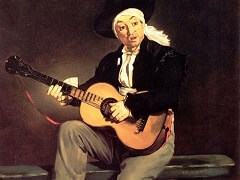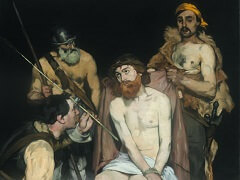Le Ballet Espagnol, 1862 by Édouard Manet
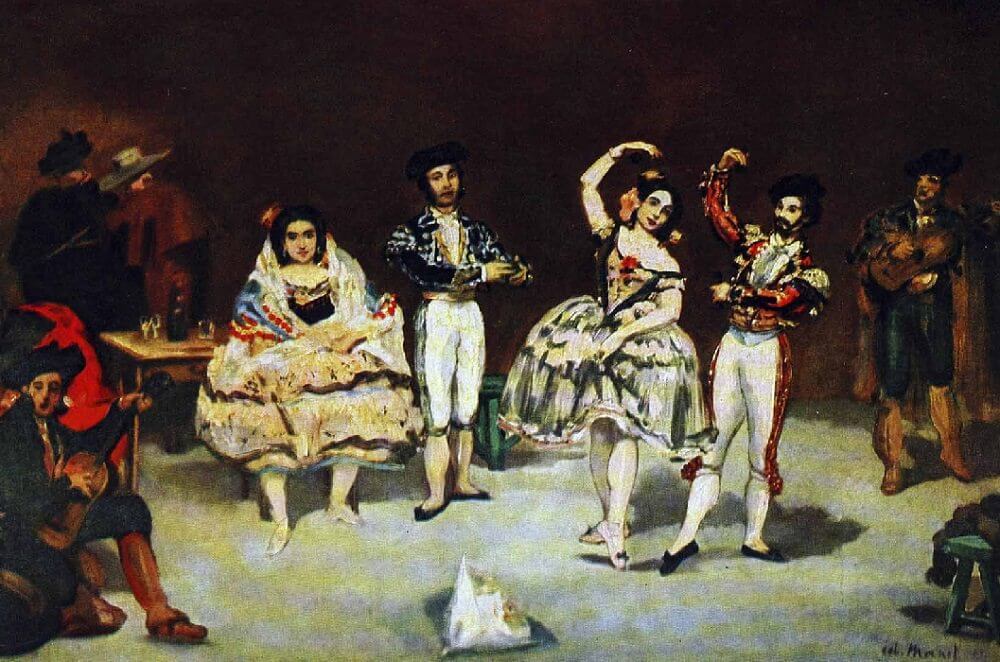
Among the numerous cafe scenes painted by Manet, this cafe-concert is among the most suggestive. With bold, golden strokes that seem to take their color from the beer in the mugs, Manet shows us people looking on while the singer reflected in the mirror sings herself hoarse. Above and beyond the picture of boulevard life it presents, this painting is remarkable for its brilliance and vigor. Manet has painted the hands with great skill and elegance. (It is interesting to note that his treatment of hands is never so fine as when he has not labored over them too much.) The composition itself is a symphony of blues and golds that illuminate the blacks and impart a lively rhythm to the whole picture.
The setting is the Reichshoffen cabaret on the boulevard Rochechouart. The picture is one of a series of similar scenes painted either here or at the Nouvelle-Athenes. The man in the top hat is one of Manet's regular models; he also posed for the watercolor entitled Punchinello.
Manet liked the atmosphere of cafes and brasseries and often sat in them for relaxation after working. He met his friends there, and most of the knowledge we have of his life and habits comes from the people who used to talk with him or sit near him at the Cafe Guerbois, Tortoni's, or the Nouvelle-Athenes.

